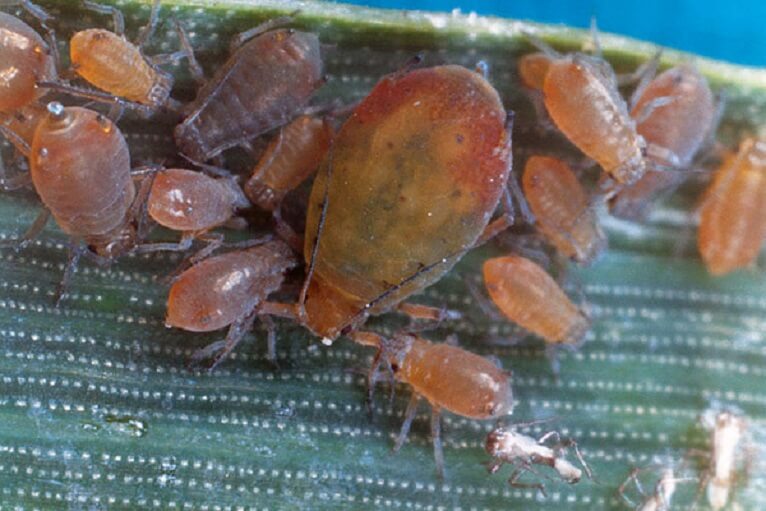
The adult flies are greyish brown and only 3mm in length. Before egg laying the adults feed by puncturing the leaf surface, with their ovipositors, and sucking up the exuding sap via their mouthparts. This leaves a distinctive trail of white dots which is the first sign of pest activity. The larvae are small, 5mm in length, with no distinctive head or legs. Can be distinguished from the larger leek moth larvae (up to 14mm) which have small legs and brown heads.

The initial damage is caused by the maggots tunnelling and 'mining' into the leaves which can ultimately lead to twisted and distorted plants. Small orange/brown pupae, 3-4mm long, can be found in the stems and bulbs. Affected plants often develop secondary fungal and bacterial infections and rots.
After mating, adults lay eggs on the leaves. The emerging lavae tunnel down into the stems and bulbs of host plants. There are two generations per year with adults laying eggs in March/April with the second generation arising later in the year in October/ November. The larvae of this second generation pupate and overwinter in the soil or in the host plant.
Originally from East and Central Europe it was first identified in the midlands (Wolverhampton) in 2002 /3 and has since been gradually spreading to other areas. Commonly reported in gardens and allotments, it has also been seen in commercial crops of leeks and salad onions. It is a pest of onions, leeks, garlic, shallots and chives.
No threshold has been established. On the continent insecticides have been shown to reduce the number of larvae and pupae per plant and horticultural fleece can be used to prevent the adults from laying eggs on the plant leaves.
